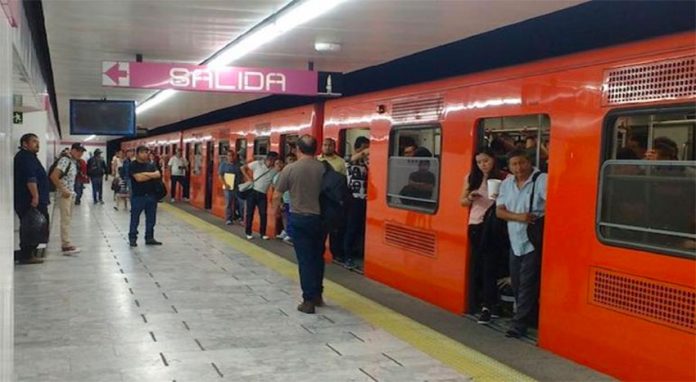Mexico City Mayor Claudia Sheinbaum announced Sunday that the city will invest over 41 billion pesos (US $2.09 billion) in an overhaul of the Metro that she said will breathe another 50 years of life into the city’s infamously aging subway system.
A January 9 fire, which occurred in an electrical substation inside the control center for subway lines 1-6 and put those lines out of commission for weeks, called new attention to the state of the Metro’s equipment, which is subject to frequent failures.
“Since the accident in January 2021, we decided we could not return to what we had,” Sheinbaum said. “The objective is to deliver something much better than what we currently find ourselves with. We will not only improve the aged conditions and the electrical installations, but we also have to renovate [the Metro] completely.”
Sheinbaum said a Metro overhaul had been planned since before the January fire, but the incident triggered an expansion of the project.
“From the adversity that the Metro experienced in January 2021, we are keeping the best, and giving citizens a much better Metro than we could have ever imagined in 2019,” Sheinbaum said.
Currently planned is the construction of a new electrical substation to replace the one destroyed in the fire; building a new train control center to manage lines 1–6 “to be the command and control center of the Metro;” the building of four new electrical transformers; modernization of the system’s electrical network, particularly that of lines 1 and 3; and other modernizations of line 1, including the addition of new train cars and repairs to station infrastructure such as escalators.
Modernization of line 1 is expected to be finished by the end of this year, although Metro director Florencia Serranía said the electrical improvements would take until sometime in 2022.
Those improvements will allow the system to run on 230 kilovolts instead of the current 85, Serranía said.
The electrical improvements to line 3 will take place in 2022 and 2023. There is also a future project being developed to modernize line 2’s electrical network.
Sources: Milenio (sp), El Universal (sp), El Economista (sp)
